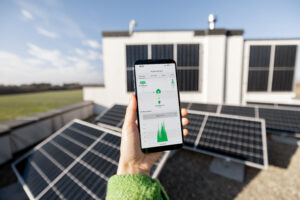 Energy transfer is an essential part of all ecosystems. It is the process by which energy is transferred from one organism to another within a food web or ecosystem. This energy transfer helps to maintain balance and stability in the environment, and it also supports the growth of organisms within an ecosystem. Examining the big picture of energy transfers in ecosystems can provide us with valuable insights into how these systems function and how they are affected by external forces. In this article, we will explore the concept of energy transfer in ecosystems, including food webs and energy pyramids, and discuss some of its implications for our environment.
Energy transfer is an essential part of all ecosystems. It is the process by which energy is transferred from one organism to another within a food web or ecosystem. This energy transfer helps to maintain balance and stability in the environment, and it also supports the growth of organisms within an ecosystem. Examining the big picture of energy transfers in ecosystems can provide us with valuable insights into how these systems function and how they are affected by external forces. In this article, we will explore the concept of energy transfer in ecosystems, including food webs and energy pyramids, and discuss some of its implications for our environment.
The environmental implications of AI are far-reaching and complex. On the one hand, AI can be used to develop new energy sources, reduce emissions, and improve energy efficiency. On the other hand, it can also lead to increased resource consumption and the production of toxic materials. AI’s potential to both positively and negatively impact our environment should not be overlooked.
If you are looking for essays for sale Essaysforme is always ready to provide students with academic papers with lowest prices.
How Food Chains & Webs Enable Energy Transfers in Ecosystems
All living organisms need energy to survive and thrive. In an ecosystem, energy is transferred from one organism to another through food chains and webs. These food chains and webs enable the transfer of energy from autotrophs, which are organisms that can produce their own food, to heterotrophs, which are organisms that depend on other organisms for their sustenance.
The transfer of energy in a food chain or web is an essential part of the functioning of an ecosystem. By understanding how these chains and webs work, we can gain insights into how different species interact with each other in a given environment and how they rely on each other for survival.
The Role of Producers & Consumers in Transferring Energy Through an Ecosystem
Producers and consumers play a vital role in the transfer of energy through an ecosystem. Producers, such as plants and algae, use photosynthesis to convert sunlight into energy. This energy is then transferred to consumers, such as animals and humans, who use it for their daily activities. Decomposers also play a key role in this process by breaking down dead organisms and returning their nutrients back into the environment for producers to use. All these organisms work together to form an interconnected web of life that is essential for sustaining life on Earth.
The web of life is an interconnected system that weaves together all living things on Earth. It is made up of complex interactions between species, their environment, and the resources available to them. From the tiniest bacteria to the biggest mammals, every single organism plays an integral role in sustaining life on our planet. This intricate network of organisms and their relationships are vital for maintaining ecosystems and providing essential services such as clean air, water, food & more.
Understanding the Flow of Energy Through an Ecosystem’s Trophic Levels
Understanding the flow of energy through an ecosystem’s trophic levels is essential for understanding the dynamics of an environment. Trophic levels are the different steps in a food chain, where each level is populated by organisms that feed on or are fed upon by the level below or above it. Each organism plays a role in this cycle, from primary producers at the bottom to predators at the top. By studying these relationships, we can gain insight into how energy moves through an ecosystem and how it affects its stability and health.
Definition of Terms:
- Ecosystem: A system formed by the interaction of a community of organisms with their environment.
- Trophic Level: A category of organisms in an ecosystem that is defined by their role in the food chain.
- Flow of Energy: The transfer of energy from one organism to another within an ecosystem. This energy is transferred through the consumption, digestion, and metabolism of food.
Exploring the Impact of Human Activity on Animal-Plant Interactions & Energy Transfer
Human activity has had a profound impact on the delicate balance of animal-plant interactions and energy transfer in ecosystems around the world. As humans have increasingly altered natural habitats, they have disrupted the flow of energy between species, leading to a decrease in biodiversity and an overall decrease in ecosystem health. In this article, we will explore how human activities have impacted animal-plant interactions and energy transfer, as well as what can be done to mitigate these impacts.
Climate change is one of the most pressing issues of our time, with its impacts being felt around the world. The effects of rising temperatures, sea level rise and extreme weather events are undeniable. While we cannot reverse the damage that has already been done, there are steps that can be taken to mitigate these impacts and ensure a more sustainable future for generations to come. From reducing our reliance on fossil fuels to investing in renewable energy sources, these measures can help reduce greenhouse gas emissions and help us all build a greener future.


